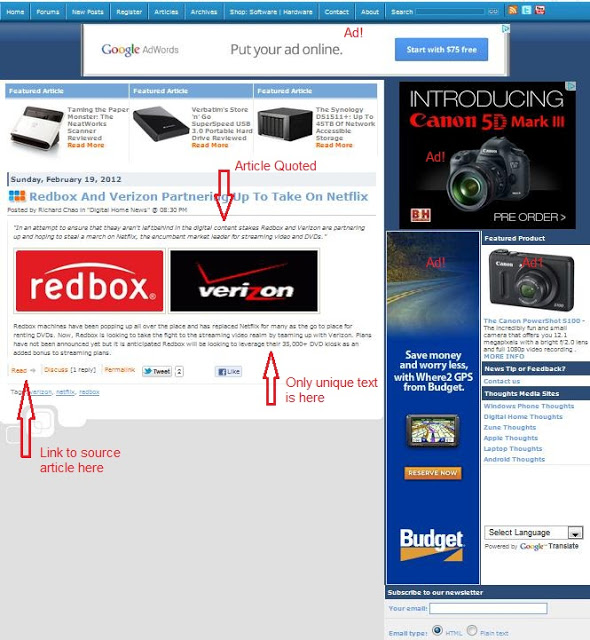BlogSPAM And Attribution – A Look At Our Sources
Since I’m reading blogs at a near constant basis, I was pretty surprised that I hadn’t heard of BlogSPAM. Amazed, I took to the Internet to really understand what this was because I think it described one the most annoying things that happens as a reader. The bigger issue with BlogSPAM is the idea of Attribution. How are we best to call out our sources and inspiration while ensuring the practice is not a slimy attempt at gaining hits? Let’s take a closer look.
The problem of BlogSPAM
So, this idea of BlogSPAM is described extremely well on the ↬Urban Dictionary. Here, take a look:

What generally happens is a blog will take an interesting article and say very little about the subject and then simply direct you to the article itself. I’ll give you a good example of this. On this blog (I will not name them), they wrap a number of ads and a signup page around a simple link to a source article. Not only does this turn out to be a colossal waste of time for the reader, it gives the site owner more page views on the back of the source article. The entire article below is simply 70 unique words that don’t add much value and a link to the source that isn’t the most obvious.

I find practices like these will undermine the efforts of bloggers that are out trying to offer value in what they write. In many ways, the pageview itself should be worth more what this blog is doing to get them. When you click on ads on that site – the author gets paid when the writer of the source material should probably be rewarded the most.
Attribution
Do you see the source link that this article is based on? You probably didn’t, nor did you click on it. It’s hidden there in plain sight in a somewhat confusing way at the bottom of the above example blog. Is this link to read more of the current article? Does that arrow to the right of the link mean I’m going offsite? The key here is that the blogger doesn’t want you to read or see the source. The act of highlighting something worth reading or something that you based your article on is called attribution.
The challenge for those that write for the web is the idea of adding value to something. We’re either going to write an article entirely original or we’re going to take something on the web (A “study” is a common example) and add value to it in some way. That value part is the hard part and hopefully why people read any particular blog. Those that simply rewrite an article and add nothing of value are becoming increasingly more common.
One site that seems to be an attempt to solve this problem is the Curators Code. The site attempts to separate between two types of attributed links, the “via” link and the “hat tip”. The trouble is, these links are often not clear and don’t seem to cover all scenarios. For example, I don’t know how I’d classify the above link to Curators Code – but I would definitely ↬Marco Arment and his great thoughts about how the Curators Code doesn’t solve the right problem. A great read, and well worth your time. The question is though, how do we call out links we want you to read? What is the fairest way to say what this article came from and where to find that information.
My feeling is that the Code is on the right track. The idea is sound, but the simple link is just not good enough to handle the task of really attributing a thought or an idea. If I were wrapping this entire post around one other blog, then sure – but this blog has been written, edited, added too, and written more as new leads or information arises. And what about other kinds of inspirations that go into this post? Right now I’m thinking of how this point about links really ties into a point I made in a past article. I could link you ↬right to the article or somehow just point you to what I think is relevant.
I wonder, which are you more likely to read? Which has more power over the other? Perhaps there are more questions than answers – but we need to find ways to enhance the medium to meet the message in the most effective ways.
What do I do, then?
We’re all in this together. As a reader, when you see a blog that provides BlogSPAM, give it a second chance (everyone deserves a second chance, right?). If it happens again, stop going there. Stop reading the articles, unsubscribe from Google Reader, disable that Alert and find more meaningful places to get that information.
As a blogger, learn more about the Curators Code and work hard to better attribute your sources and inspiration. Work to add value and give props to those that do it for you.
There are thousands of bloggers out there working hard to offer interesting and meaningful perspectives, so reward them for it.


